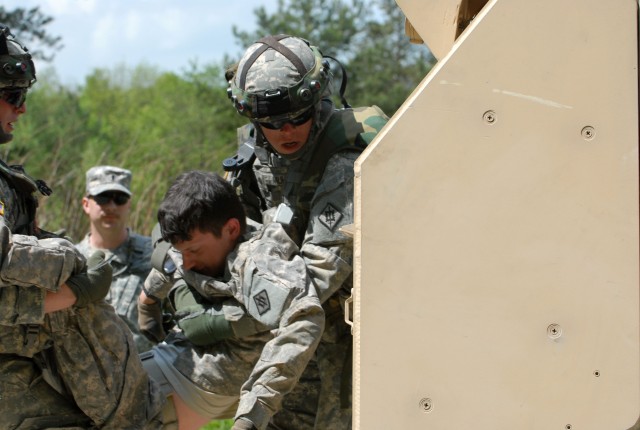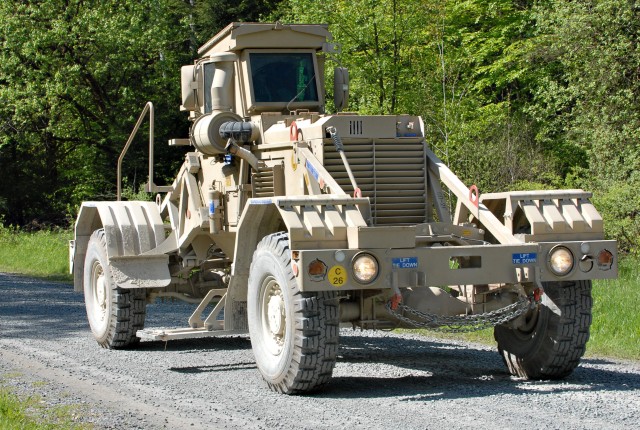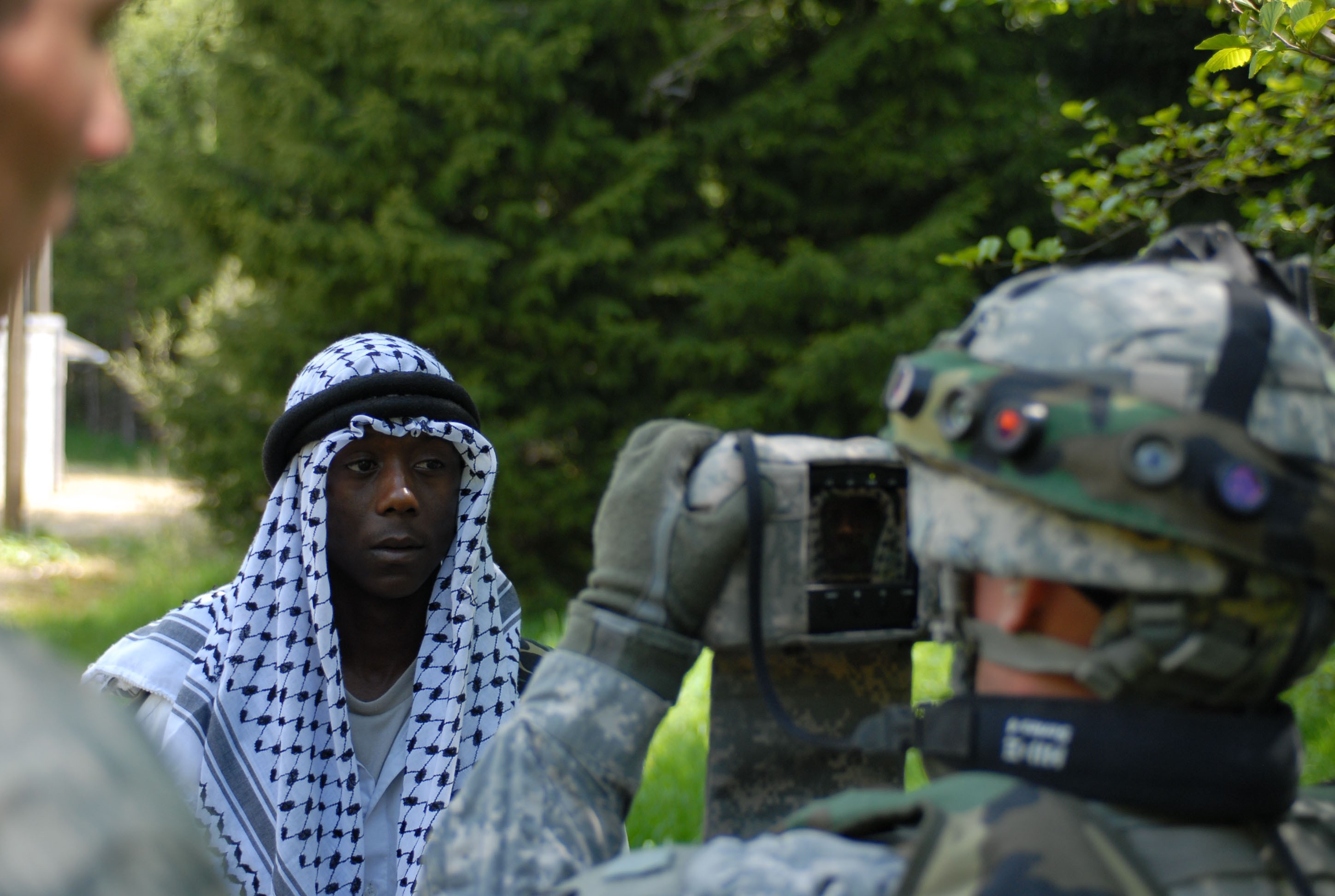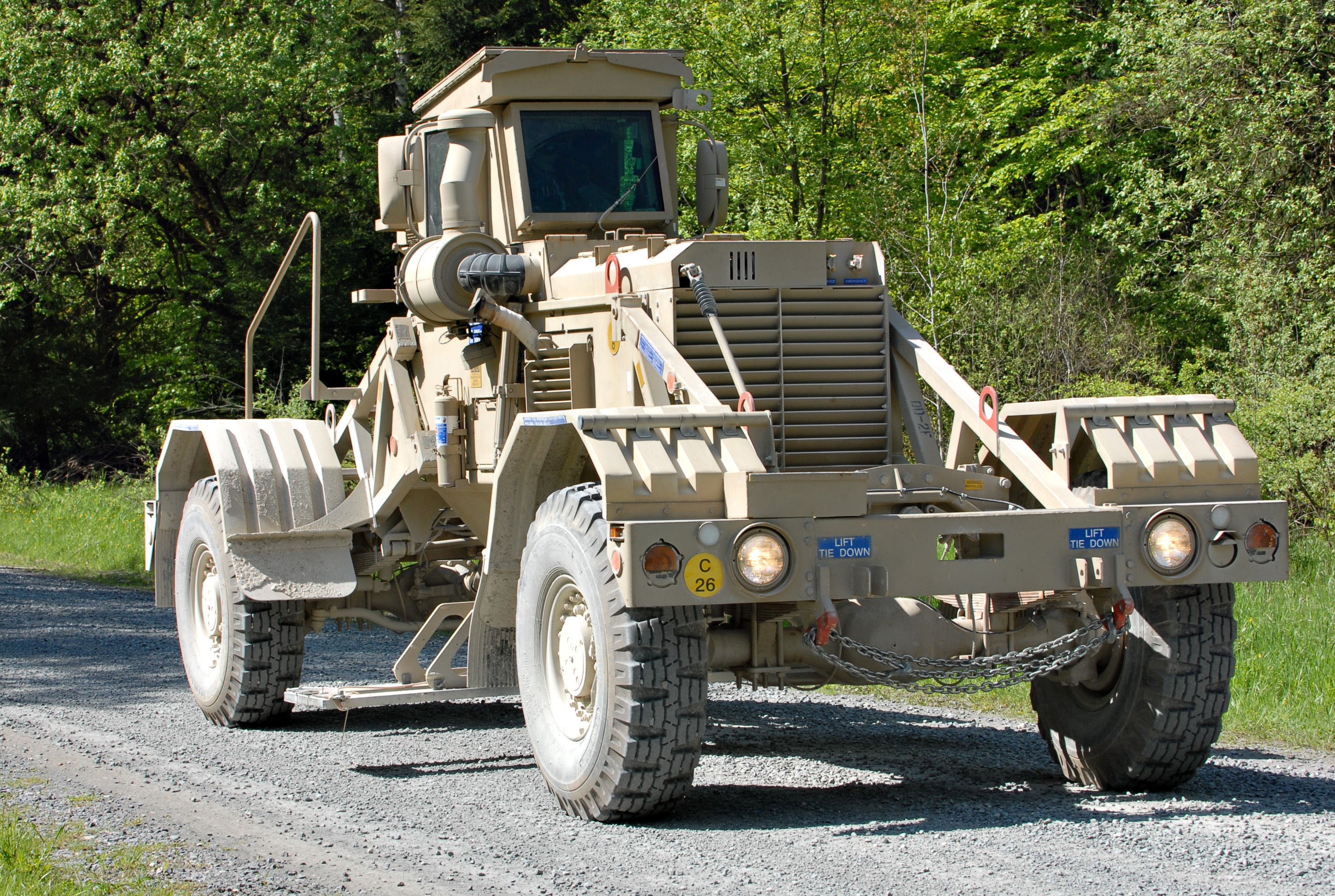In today's combat, no longer are we fighting on a front line. This urban battlefield has brought the fight to the cities, in the air, on the ground and even to the civilian neighborhoods. More than ever, training in modern warfare techniques is essential to protecting the Soldiers who defend and the civilians they protect. In May, Soldiers with the 54th Engineer Battalion out of Bamberg, Bavaria trained for 17 days on the skills they will need in this ever-changing battlefield at the Grafenwoehr Training Area (GTA).
The Soldiers trained on route clearance, mounted and dismounted operations, mobility readiness as well as running a full-scale Tactical Operation Center (TOC).
"By coming [to the GTA] we have to exercise the battalion and companies, in terms of planning resourcing and tracking," Said 1st Lt. Rob Etheridge, S3 operations battle captain with the 54th Engineering Battalion. Etheridge said the training area at Bamberg is smaller the GTA, allowing for platoon and squad level training but not battalion level training. At Grafenwoehr, Soldiers have the ability to experience the full spectrum of a battalion deployment.
Though Engineers have various important skill sets, 1st Lt. Nassar Jabour, assistant S3 plans officer with the 54th Engineering Battalion, said in the current conflicts abroad, many engineers will be primarily focused on route clearance. He said GTA provides the Soldiers with equipment vital to training for this arena.
"I think the Soldiers need the most training on the Husky and the Buffalo. Counter-IED (Improvised Explosive Devices) changes a lot. We are always trying new things to counter them, but these two vehicles are the mainstay," said Jabour.
The Buffalo is a heavily armored explosive ordnance (EOD) vehicle used for mine detection and removal, as well as removing objects in the roadways that could be potential hiding places for explosives. The Husky Mine Clearance Vehicle has a large metal detector attached to it which can locate an underground mine before the more penetrable vehicles get within the blast radius of the mine. Both are used in Iraq and Afghanistan for route clearance. With these vehicles being so vital on the battlefield, they are hard to acquire for training. Though the Soldiers can do much of their training at their home base, with simulators and working with the vehicles available to them, there are certain advantages to training at Grafenwoehr.
"We don't have access to these vehicles at our base in Bamberg, Grafenwoehr has more equipment and facilities than we have at home," said Etheridge.
Jabour said there is also equipment, like the Handheld Interagency Identity Detection Equipment (HIIDE) system, and mine-sweeping robots, used on the current battlefields, which are not available on most bases but can be found at GTA.
Another one of the benefits of training at GTA is the vast training arena available. Etheridge said because of the multiple ranges and space available, the battalion was able to run the TOC in an area separate from the troops on the ground, as it would be in a real battle situation. He said also because the battalion has to mobilize in order to get to the training at GTA, the training helps with higher level logistics and planning.
"This is a much bigger deal. We have to move 600 people and equipment in two hours to get here. It gives the battalion a chance to simulate a deployment. We did a [Soldier Readiness Processing) before we came here. We are able to simulate a rear detachment," said Etheridge. "We also have to conduct deployment operations from a medical and logistical standpoint."
"In Bamberg, we get so use to routine. Here is more like in a battlefield enviorment, where you don't know what's going to happen to you. You don't know where you're going to sleep or get your supplies so it forces you to use the systems put in place," said Etheridge.
Timothy Noall, training area operations manager, for GTA Range Operations, at Grafenwoehr, Germany said this training is just a small part of the services available at the GTA. He said the GTA has close to 4,000 moving targets on these ranges and impact area could handle up to 500 lb. munitions. The GTA is continuously updating and improving their ranges in accordance with Department of Defense guidelines as well as lessons learned from the Soldier coming back from the field.
"This [training area] is the big leagues. This is the largest U.S. training area in Europe. We've got everything, all the big guns, we can do helicopters, tanks, everything," said Noall.
For units interested in more information on the GTA and the ranges available can go to the Training and Resources Management System (TRMS) for the Joint Multinational Training Command at https://trms.eur.army.mil , or contact the GTA Range Operations scheduling office at DSN 314-475-6198.








Social Sharing